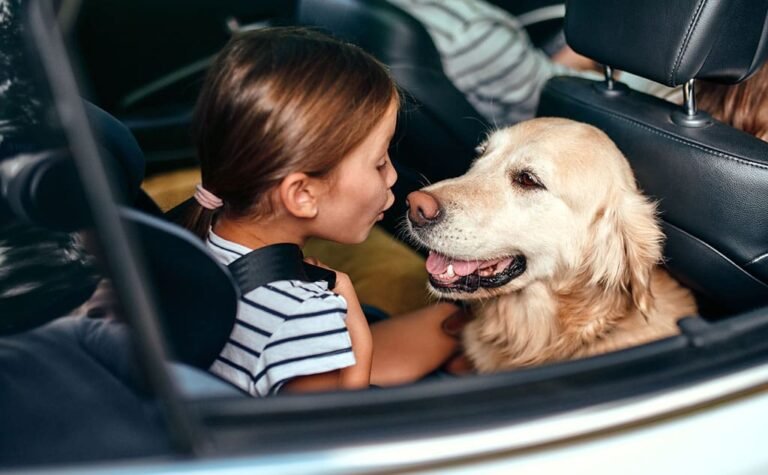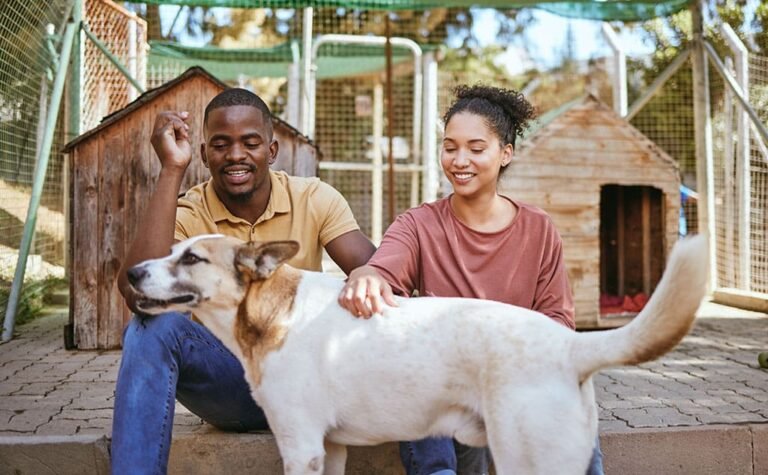Dogs and kids can be a great match, but it’s important to foster a safe and happy relationship between them. With the right approach, you can help ensure that both your dog and your child are happy, healthy, and safe. Here are some tips for fostering a positive relationship between your dog and your child.
Teach Your Child to Be Gentle and Respectful
When it comes to fostering a positive relationship between your child and your dog, it’s essential to teach your child to be gentle and respectful. Children need to learn how to approach dogs calmly and respectfully, avoiding any rough handling, pulling on their tails or ears, or any other actions that could cause harm. It’s also crucial for children to understand that dogs have personal space and that they should not disturb them when they’re sleeping, eating, or resting.
Teaching your child to be gentle and respectful around your dog is an ongoing process that requires patience and consistency. It’s important to set clear boundaries and explain to your child what’s acceptable behavior and what’s not. Reinforce positive behavior by praising your child when they’re gentle and respectful around your dog. If your child behaves inappropriately, take the opportunity to teach them what they should do differently next time.
Supervise All Interactions
Even if your dog is well-trained and has a gentle temperament, it’s crucial to supervise all interactions between your child and your dog. Dogs can be unpredictable, and even the most well-behaved dog may snap or bite if they feel threatened or uncomfortable. As a parent, it’s your responsibility to keep an eye on your child and your dog and intervene if necessary to ensure everyone’s safety.
It’s essential to supervise interactions between your child and your dog not just when your child is young, but also as they grow older. As children become more independent, they may start to take risks or behave more recklessly around your dog. By supervising all interactions, you can help prevent accidents and ensure that your child and your dog continue to have a positive relationship.
Provide a Safe Space for Your Dog
Just like humans, dogs need a safe space where they can retreat when they feel overwhelmed or stressed. It’s important to create a space in your home where your dog can go to relax and feel safe, such as a crate or a cozy bed in a quiet corner. Make sure your child understands that this is your dog’s special place and should be left alone when your dog is there.
Providing a safe space for your dog is particularly important if you have young children who may not understand the importance of giving dogs space. You may also want to consider providing your dog with a place to go outside where they can relax and unwind, such as a doghouse or a sheltered area in your yard.
Teach Your Dog Basic Commands
Teaching your dog basic commands, such as “sit,” “stay,” and “come,” is an essential part of fostering a positive relationship between your dog and your child. When your dog knows these commands, it’s easier to control their behavior and prevent them from acting inappropriately around your child. Make sure your dog knows these commands and that they respond to them consistently.
It’s also important to teach your child how to use these commands to control your dog’s behavior. Encourage your child to use a calm, firm voice when giving commands and reinforce positive behavior with praise and rewards.
Set Boundaries and Limits
Setting boundaries and limits is crucial when fostering a positive relationship between your dog and your child. Make sure your child knows what they can and can’t do around your dog, and teach your dog what behaviors are acceptable around your child. For example, you may want to teach your dog not to jump up on your child or to wait patiently while your child pets them.
Introducing a New Dog to Your Child
If you’re introducing a new dog to your family, it’s important to take the time to ensure a smooth transition. Start by letting your child meet the dog in a neutral location, such as a park or a friend’s backyard. Allow your child to approach the dog slowly and calmly, and watch the dog’s body language to ensure they’re comfortable. If the dog seems nervous or aggressive, it may be best to postpone the introduction until a later time.
Once your child and the dog have had a chance to meet and get comfortable with each other, it’s time to bring the dog home. Make sure your home is a safe and welcoming environment for the dog, with plenty of toys, food, and water available. Introduce your child to the dog slowly and under close supervision, and encourage gentle petting and positive interactions.
Teaching Your Child Dog Care Responsibilities
Teaching your child to take care of your dog can be a great way to foster a positive relationship between them. Encourage your child to take on age-appropriate dog care responsibilities, such as feeding the dog, filling their water bowl, and taking them for walks. Make sure your child understands the importance of consistent care, and supervise their interactions with the dog to ensure everyone’s safety.
It’s important to remember that children should never be solely responsible for a dog’s care. As the adult, it’s your responsibility to ensure that your dog’s needs are being met and that they’re receiving proper care and attention.
When to Seek Professional Help
If you’re struggling to foster a positive relationship between your dog and your child, it may be time to seek professional help. A dog trainer or behaviorist can help you identify the root of the problem and develop a plan to address it. They can also teach you and your child how to communicate with your dog effectively and safely.
It’s important to seek professional help if your dog exhibits any signs of aggression, such as growling, biting, or snapping. Aggressive behavior should be taken seriously and addressed immediately to ensure everyone’s safety.
Fostering a safe and happy relationship between your dog and your child is essential for both their well-being. By teaching your child to be gentle and respectful, supervising all interactions, providing a safe space for your dog, teaching basic commands, setting boundaries and limits, practicing positive reinforcement, introducing a new dog to your child, and teaching your child dog care responsibilities, you can help ensure that both your dog and your child are happy, healthy, and safe. Remember, if you’re struggling to foster a positive relationship, seek professional help to ensure everyone’s safety and well-being.




